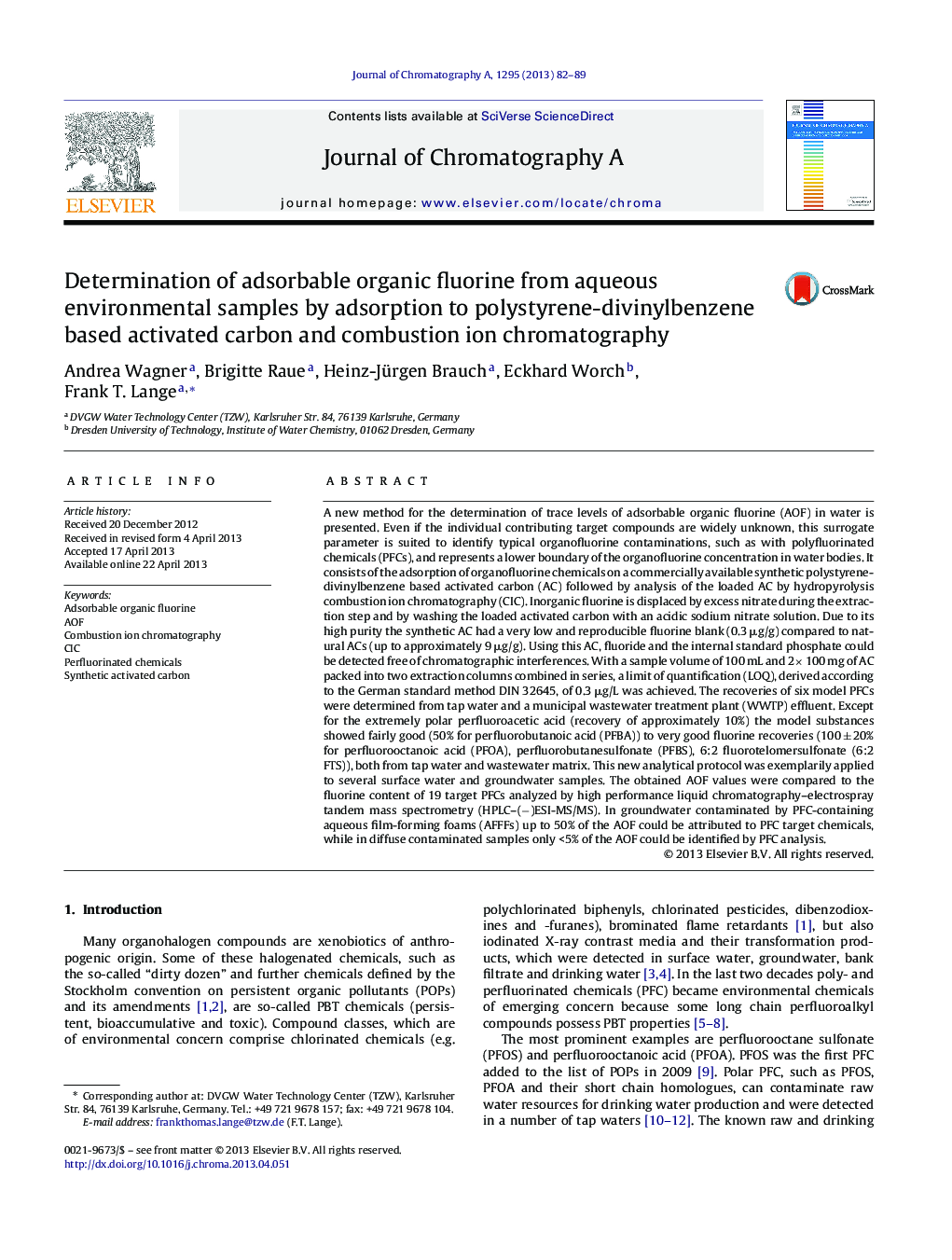| کد مقاله | کد نشریه | سال انتشار | مقاله انگلیسی | نسخه تمام متن |
|---|---|---|---|---|
| 1201643 | 1493631 | 2013 | 8 صفحه PDF | دانلود رایگان |

• A new surrogate parameter protocol for adsorbable organic fluorine (AOF) analysis was developed.
• The LOQ is two orders of magnitude below that of the draft standard DIN 38409 H29.
• The use of a synthetic activated carbon provides low procedural fluorine blanks.
• The new AOF method was successfully applied to real freshwater samples.
• Analysis of AOF vs. specific PFCs revealed high percentage of unknown AOF.
A new method for the determination of trace levels of adsorbable organic fluorine (AOF) in water is presented. Even if the individual contributing target compounds are widely unknown, this surrogate parameter is suited to identify typical organofluorine contaminations, such as with polyfluorinated chemicals (PFCs), and represents a lower boundary of the organofluorine concentration in water bodies. It consists of the adsorption of organofluorine chemicals on a commercially available synthetic polystyrene-divinylbenzene based activated carbon (AC) followed by analysis of the loaded AC by hydropyrolysis combustion ion chromatography (CIC). Inorganic fluorine is displaced by excess nitrate during the extraction step and by washing the loaded activated carbon with an acidic sodium nitrate solution. Due to its high purity the synthetic AC had a very low and reproducible fluorine blank (0.3 μg/g) compared to natural ACs (up to approximately 9 μg/g). Using this AC, fluoride and the internal standard phosphate could be detected free of chromatographic interferences. With a sample volume of 100 mL and 2× 100 mg of AC packed into two extraction columns combined in series, a limit of quantification (LOQ), derived according to the German standard method DIN 32645, of 0.3 μg/L was achieved. The recoveries of six model PFCs were determined from tap water and a municipal wastewater treatment plant (WWTP) effluent. Except for the extremely polar perfluoroacetic acid (recovery of approximately 10%) the model substances showed fairly good (50% for perfluorobutanoic acid (PFBA)) to very good fluorine recoveries (100 ± 20% for perfluorooctanoic acid (PFOA), perfluorobutanesulfonate (PFBS), 6:2 fluorotelomersulfonate (6:2 FTS)), both from tap water and wastewater matrix. This new analytical protocol was exemplarily applied to several surface water and groundwater samples. The obtained AOF values were compared to the fluorine content of 19 target PFCs analyzed by high performance liquid chromatography–electrospray tandem mass spectrometry (HPLC–(−)ESI-MS/MS). In groundwater contaminated by PFC-containing aqueous film-forming foams (AFFFs) up to 50% of the AOF could be attributed to PFC target chemicals, while in diffuse contaminated samples only <5% of the AOF could be identified by PFC analysis.
Journal: Journal of Chromatography A - Volume 1295, 21 June 2013, Pages 82–89